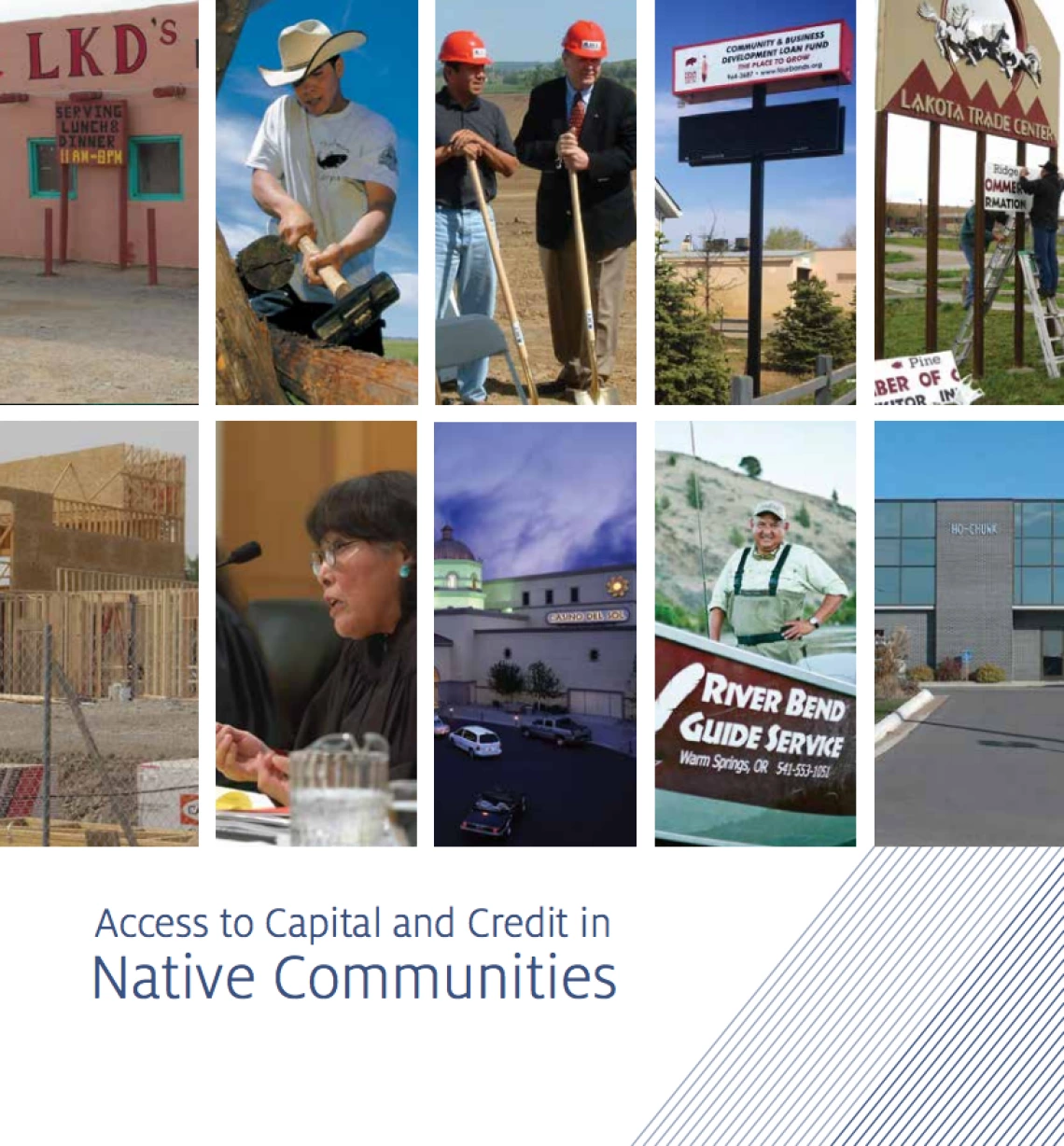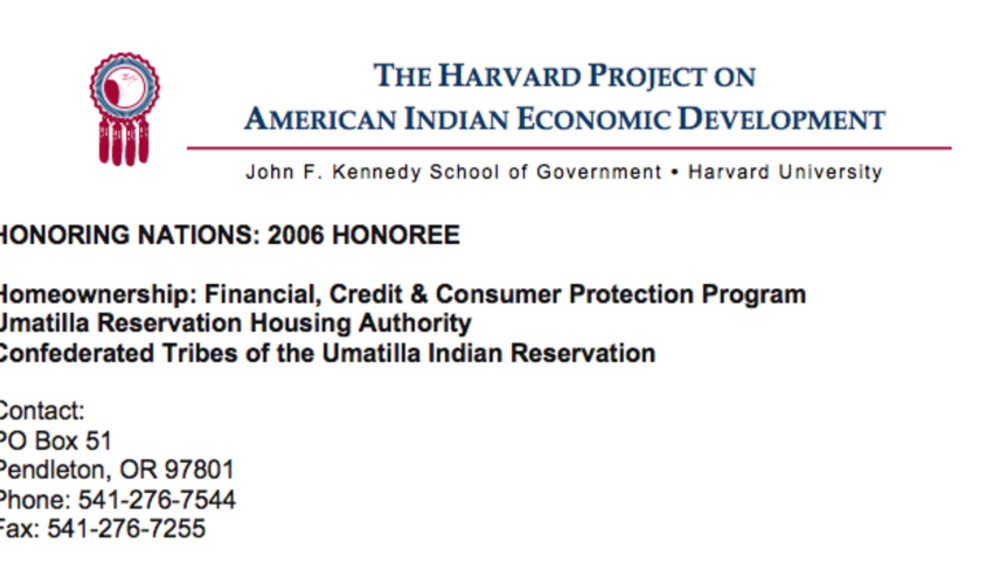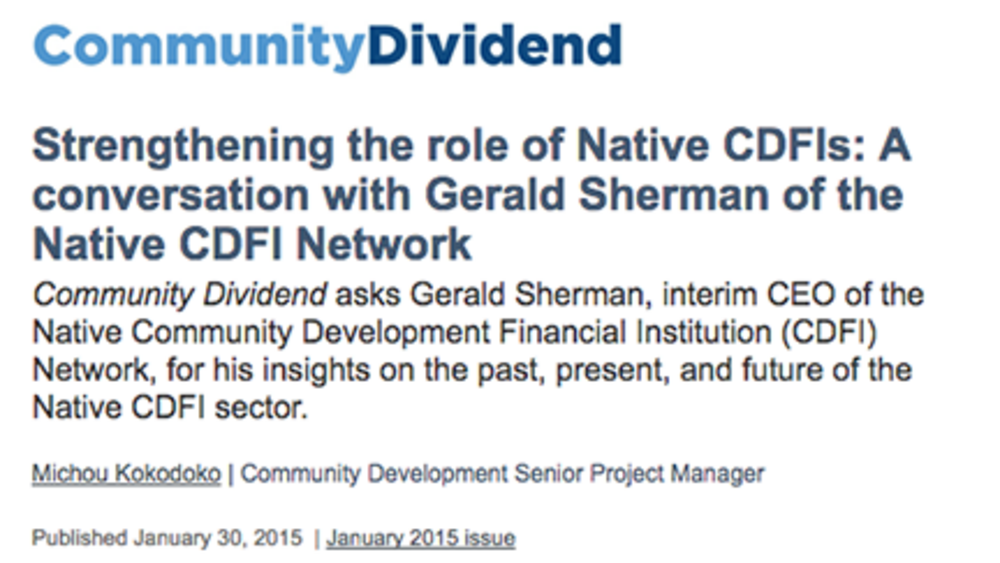This report emerges from the Community Development Financial Institution (CDFI) Fund’s commitment to helping Native Communities develop through increased access to capital. The ideas presented are grounded in an understanding of current economic conditions in Native Communities and in established research concerning the drivers of economic change in Native nations. They also reflect voices from the field, a key aspect of the research methodology.
Additional Information
Native Nations Institute. 2016. Access to Capital and Credit in Native Communities, digital version. Tucson, AZ: Native Nations Institute.




